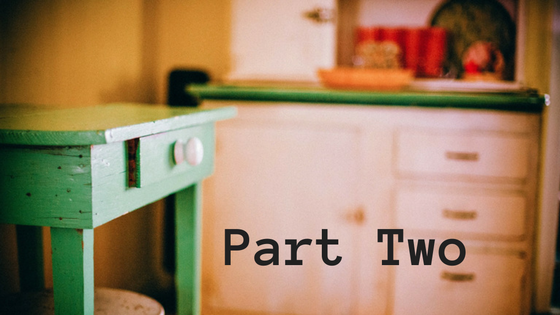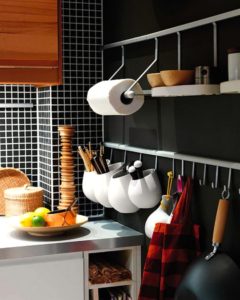Part 2 of 4
In part 1, you read about why accessible kitchen cabinets are important to you, and which general features to include in the design of them. Now you are going to discover what to do to your lower cabinets to increase their usability and usefulness into the future.
Are you are sick and tired of having to get down on your knees and peer into the depths of your lower cabinets? Or maybe your tricky hip or bad back makes getting up from a kneeling position difficult.
There are some great solutions out there that roll the contents out of the cabinets and into the light, so you can see exactly where everything is quickly and easily and with less strain on body.
Lower cabinet must-haves
#7) Full extension drawers
Use these drawers to replace as many cabinets with doors as possible. Make sure they are full pull-out, so you can see to the very back of each one.
#8) Roll-out shelves or trays
If it is not possible to have drawers, install roll-out shelves instead. These are basically shallow wooden trays or wire baskets. Ensure these are also full pull-out.
#9) Organizers and dividers
These can be home-made or custom-made by the cabinet company. They will keep your items separate and quick to find. You can use them to divide your cooking trays, dishware or pots and their elusive lids.
There are options for different configurations of drawers within drawers that will keep your cutlery, knives, and cooking utensils beautifully organized.
#10) Pull-out Lazy Susan
Look for the ones where the shelves extend completely out of your corner cabinet for full access.
#11) Pull-out pantry
This could be up to full wall height and is best located somewhere you can access it from both sides.
#12) Open storage
This is so much easier to access and you can fit shelves in almost anywhere. A good place is at the end of the run of upper and lower cabinets and on the island. Adding both narrow and wide shelving will be useful for storing a wide range of items.
There are also systems which incorporate hooks and shelves that hang from rails. This helps keep most used products or utensils in easy reach.
Action plan
Now that you see how simple it is to improve the accessibility of your lower cabinets, part 3 of this series will move to the upper cabinets and show you how to make them a little less out of reach.
Read part 1 of this series
Read part 3 of this series



